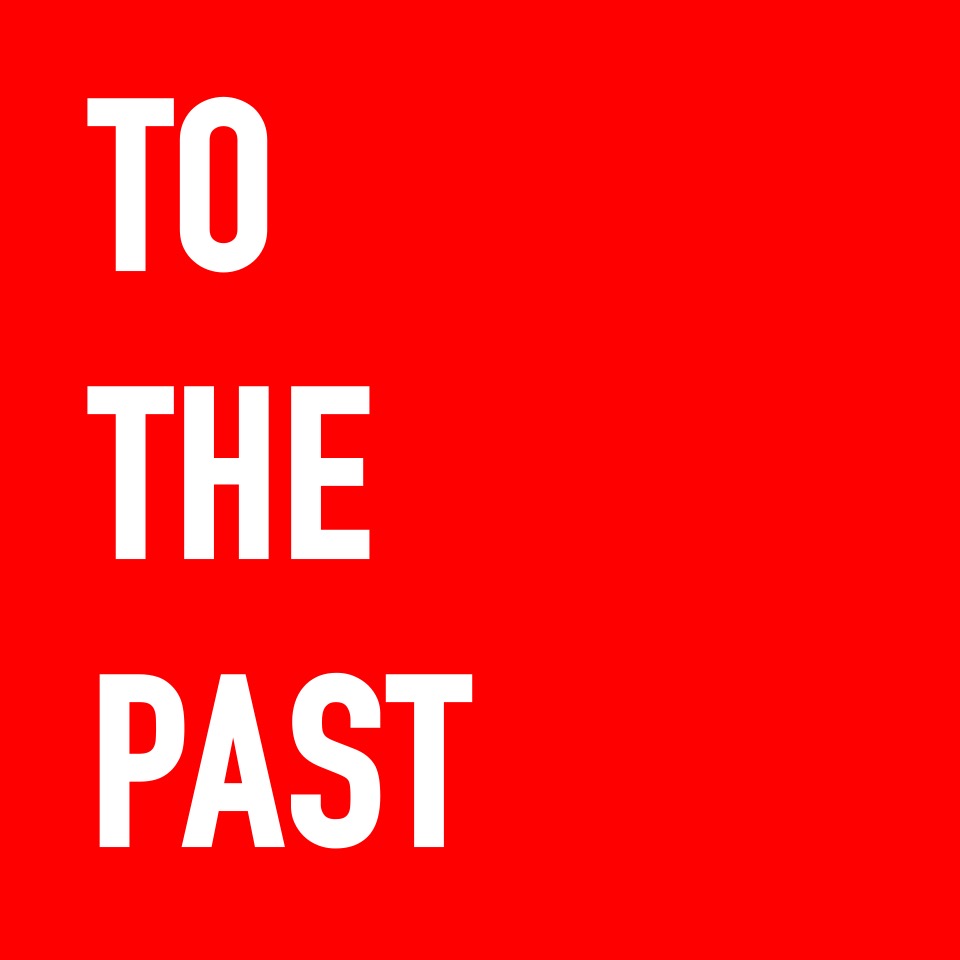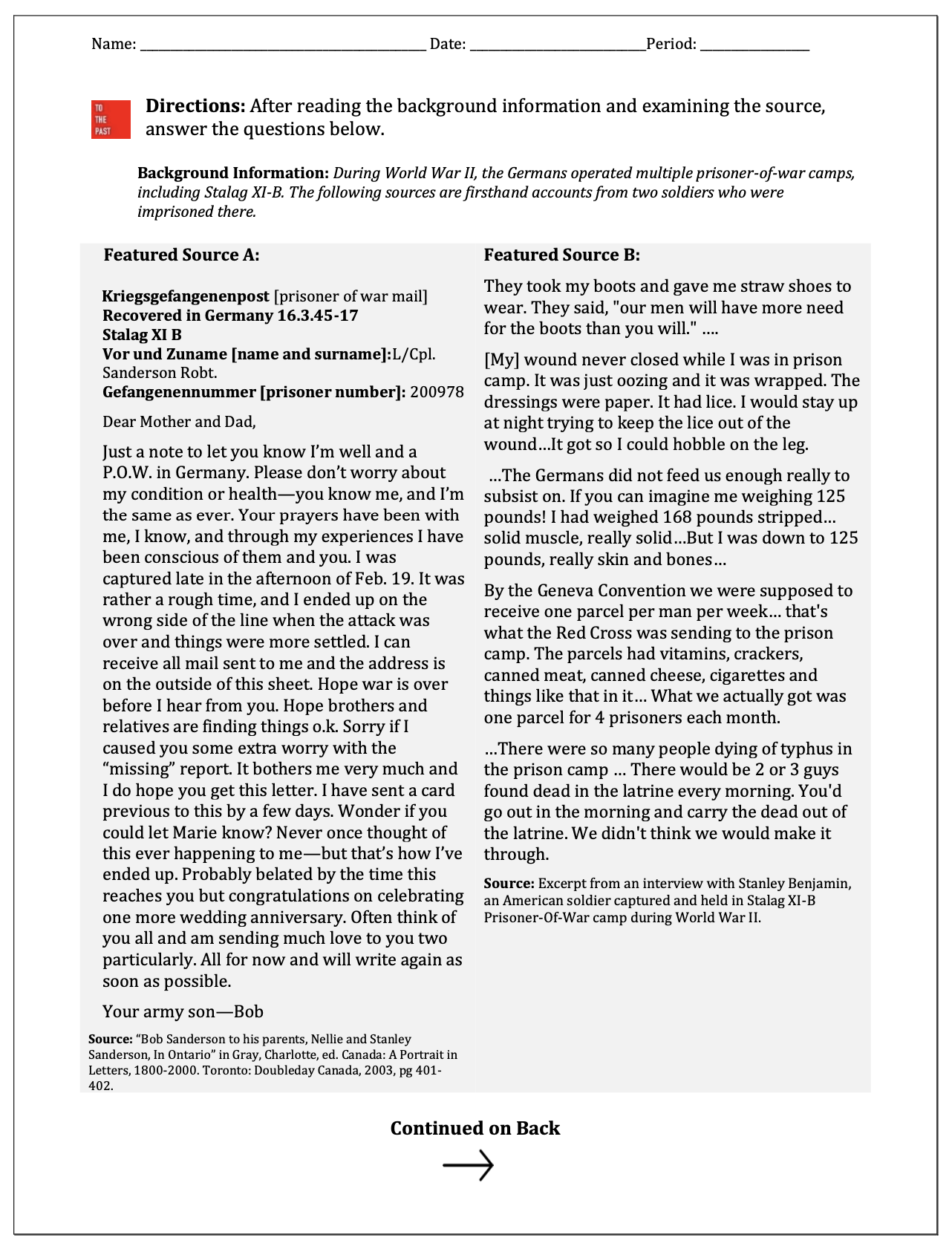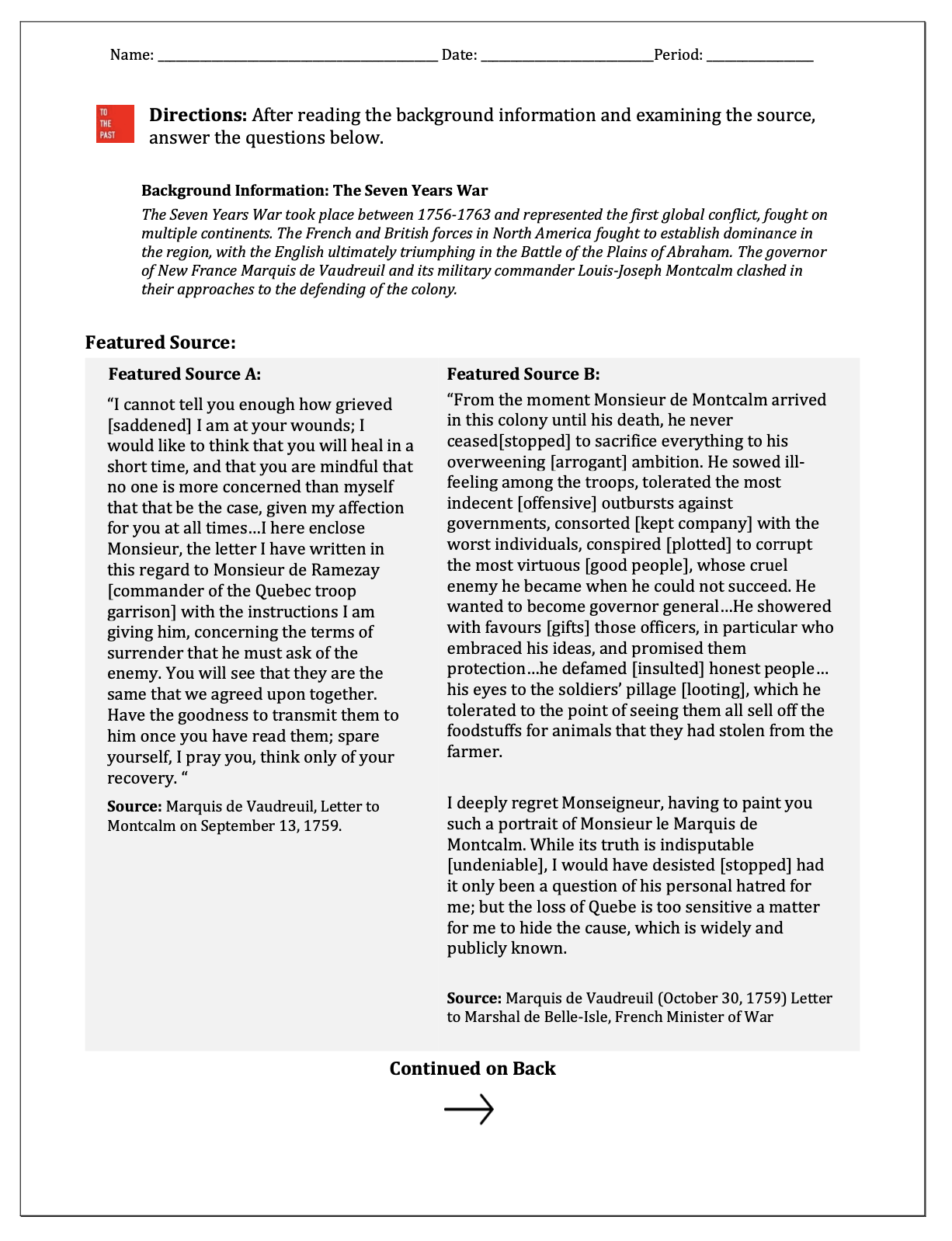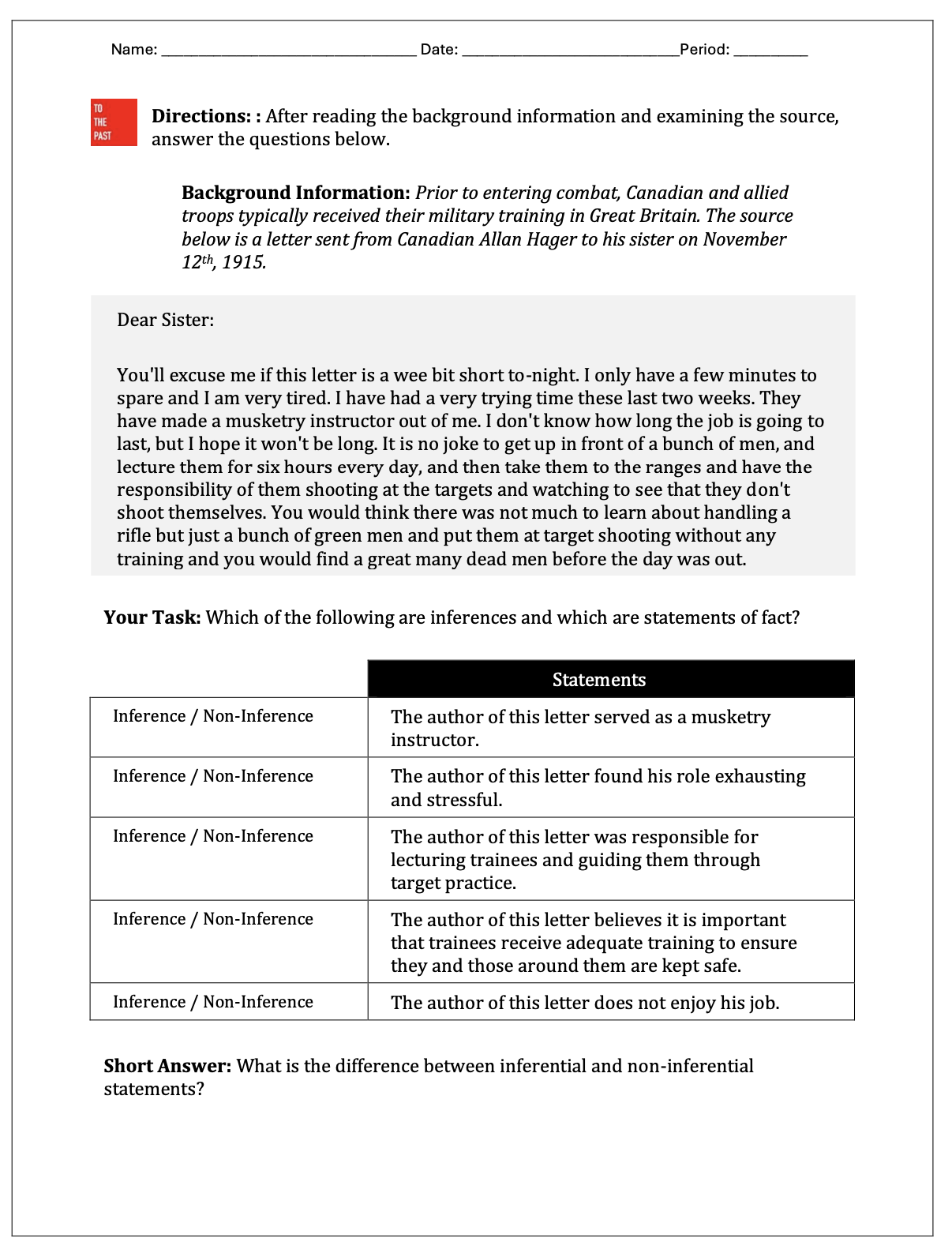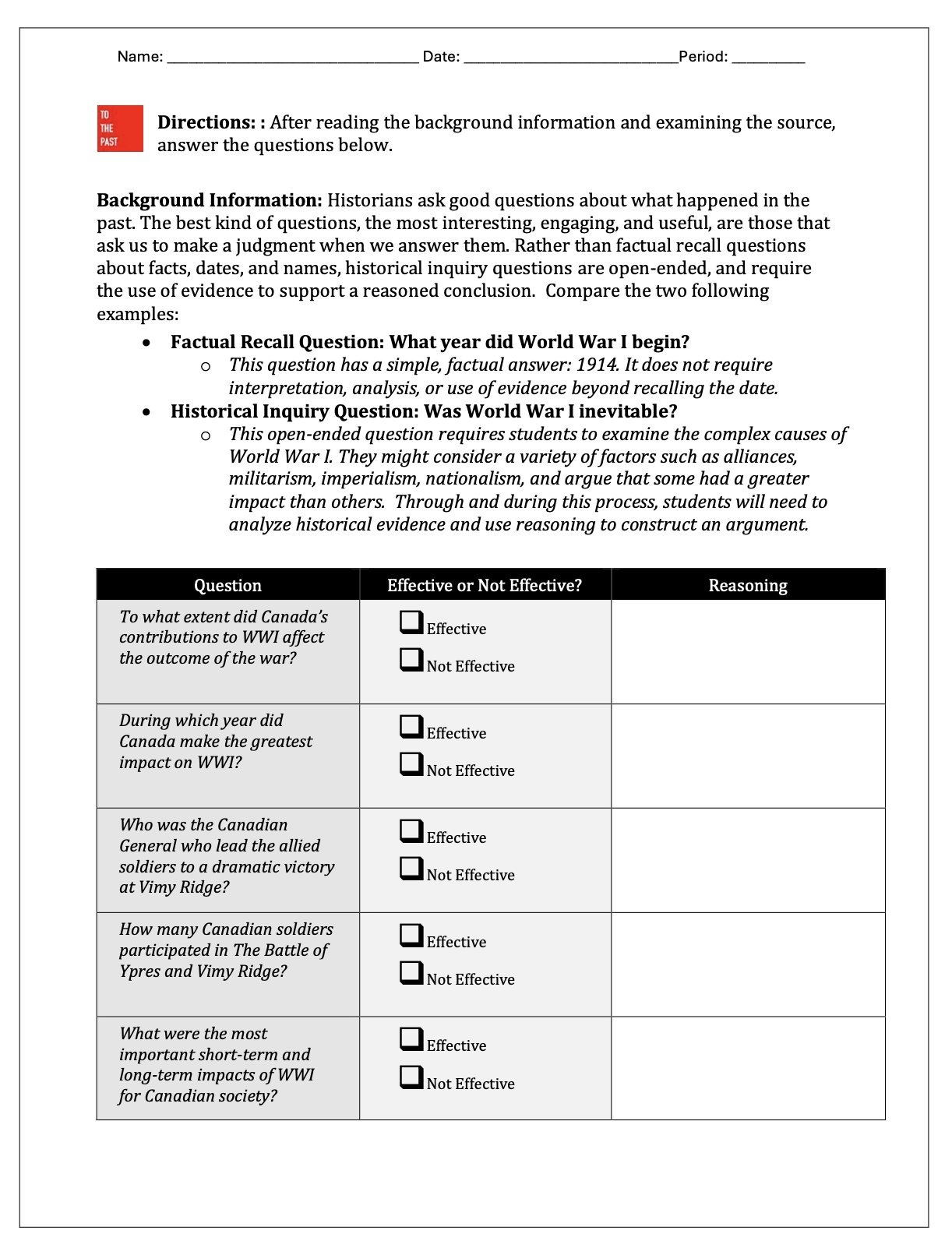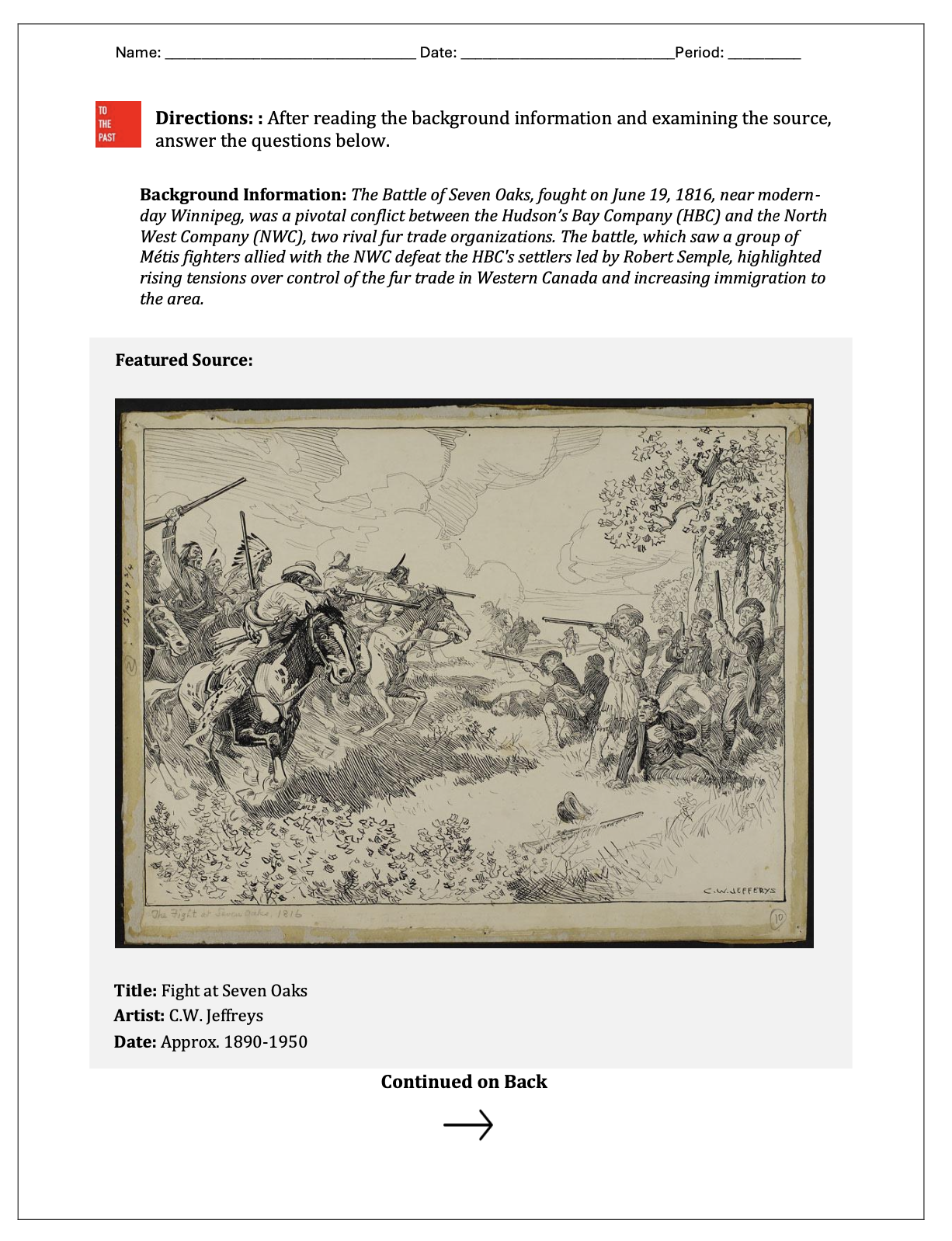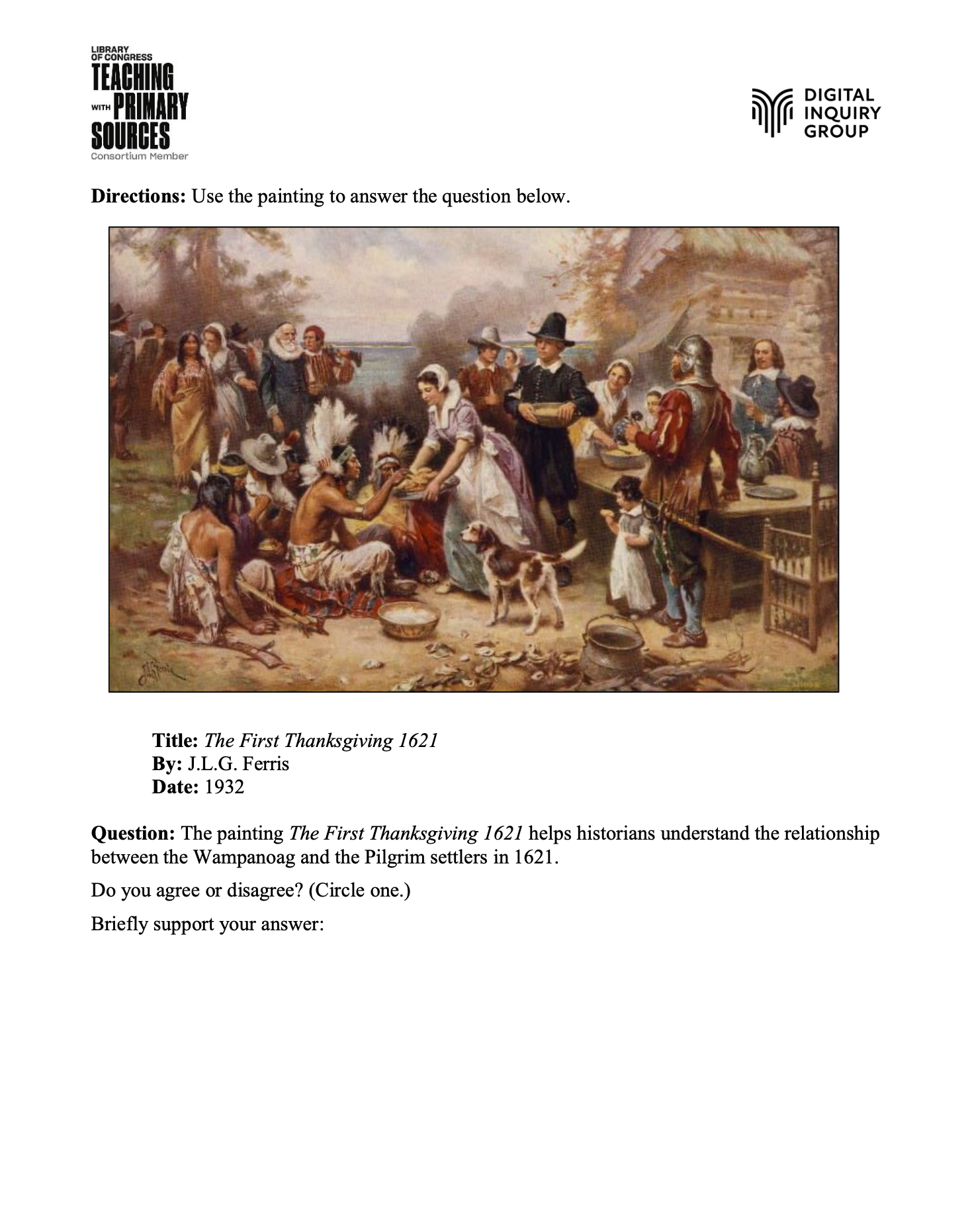
The development of Historical Thinking models in the past decades has resulted in a subsequent boon of resources available for teachers who wish to teach and practice disciplinary inquiry with their students. Such an approach carries the potential to equip students with invaluable informational literacy, with students gaining a better understanding of how to distinguish between types of evidence, source and assess the credibility and usefulness of evidence, and closely read and corroborate between sources. That potential would be a civic good. But I also appreciate teaching for historical thinking because I think it can also simply be more engaging than what is traditionally trotted out in the history classroom.
However not all historical thinking challenges have this same potential.
- “What were daily conditions like for internees in internment camps across Canada during World War I?” is not as powerful as, “Was the internment of Ukrainians during World War I justified?“
- “What were the most important causes of the Winnipeg General Strike?” lacks the pull of, “Was the government justified in claiming that the Winnipeg General Strike was the beginning of a communist revolution and using military force to put it down?“
- “Should the Halifax explosion be considered a significant event in Canadian history?” Is good, but I am even more attracted to “Who and /or what is most responsible for causing the Halifax explosion?“
Admittedly, the framing of a question is so very important as an entrance point for students. “Should the Halifax Explosion be considered a significant event” has an almost conspiratorial, vaguely confrontational tone, as though we were being given a challenge…”Prove it.” And that’s good. Certainly better than, “What makes the Halifax Explosion a historically significant event?” Comparing two events and asking which is more significant can also be fruitful, particularly when connected to a real world situation such as arguing for the topic’s inclusion in a museum exhibit, a commemorative stamp, or allocation of funds for centennial celebration.
Tim Lomas suggested that the historical thinking challenges with the best potential to engage learners combine the best elements of a soap opera and a detective stories. These tend to engage the imagination in ways that others do not. In my mind, “Identify the continuities and changes in the types of employment engaged in by Chinese Canadians from 1875 to 1910, and 1910 to 1947,” does not feature those qualities, or at least not compared with “Who should be held responsible for causing the Regina Riot in 1935?” While the former investigation will provide rich information and valuable practice, the latter will likely pique student’s curiousity a touch more.
In the examples that I have provided, you may notice that not all of my preferred historical investigations are soap operas and whodunits. Others perhaps could best be described as simply controversial, and requiring a fairly weighty judgment. When we can’t find the soap opera in the history, perhaps we can create it in our classroom in the form of a fiery debate.
As well, I admit that the above argument also relies heavily on my own topical preferences when studying history. For those who have eyes, show me what I am missing in the historical challenges I avoid!
What historical investigations have you found particularly engaging for your students? Why do you think they had such pull?
